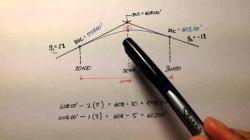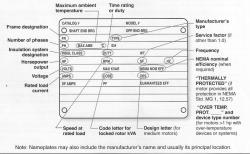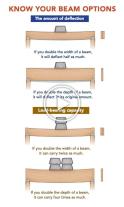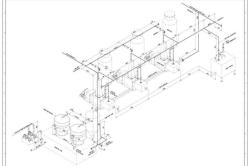How do you calculate a horizontal curve?
Calculating a horizontal curve typically involves determining the curve's radius, length, and central angle. Horizontal curves are commonly used in civil engineering, road design, and railway design to smoothly transition between straight sections of a road or track and curved sections. Here are the steps to calculate a horizontal curve:
Gather Data:
- Obtain the necessary data, including the tangent (straight) sections' lengths on either side of the curve, the desired design speed, and any design criteria or standards specific to your project.
Determine the Radius (R):
The radius of the curve is a critical parameter. It defines the curvature of the curve and determines the sharpness of the curve. The formula to calculate the radius is:R = (V^2) / (g * e)
Where:
- R is the radius of the curve (in meters).
- V is the design speed of the road or railway (in meters per second).
- g is the acceleration due to gravity (approximately 9.81 m/s²).
- e is the rate of superelevation (banking of the road, typically expressed as a decimal).
Calculate the Central Angle (θ):
The central angle is the angle subtended by the curve at the center of the circle. It is usually measured in degrees. The formula to calculate the central angle is:θ = (180 * L) / (π * R)
Where:
- θ is the central angle (in degrees).
- L is the length of the curve (in meters).
- R is the radius of the curve (from step 2).
Determine the Length of the Curve (L):
You can calculate the length of the curve using the formula:L = (π * R * θ) / 180
Where:
- L is the length of the curve (in meters).
- R is the radius of the curve (from step 2).
- θ is the central angle (from step 3).
Design the Curve:
- Use the calculated values to design the horizontal curve, ensuring that it meets safety and design standards. This may include specifying the curve's radius, superelevation, and the transition lengths between the tangent and curve sections.
Verify and Adjust:
- It's important to verify the design using appropriate software or engineering tools. Adjustments may be needed based on real-world conditions, terrain, and other factors.
Keep in mind that these calculations provide a basic overview of how to calculate a horizontal curve. The design of horizontal curves can become more complex depending on specific project requirements and standards, such as those outlined by transportation authorities or engineering organizations. Consulting with a qualified civil engineer or using specialized design software is advisable for precise curve design in professional projects.













